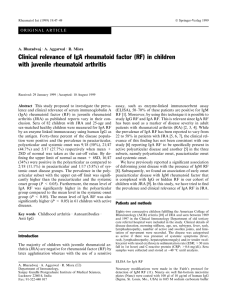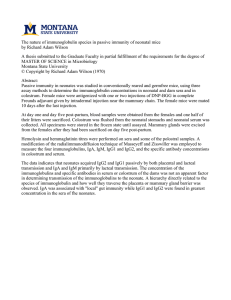Anti-IgG + IgM + IgA antibody (Alkaline Phosphatase)
advertisement
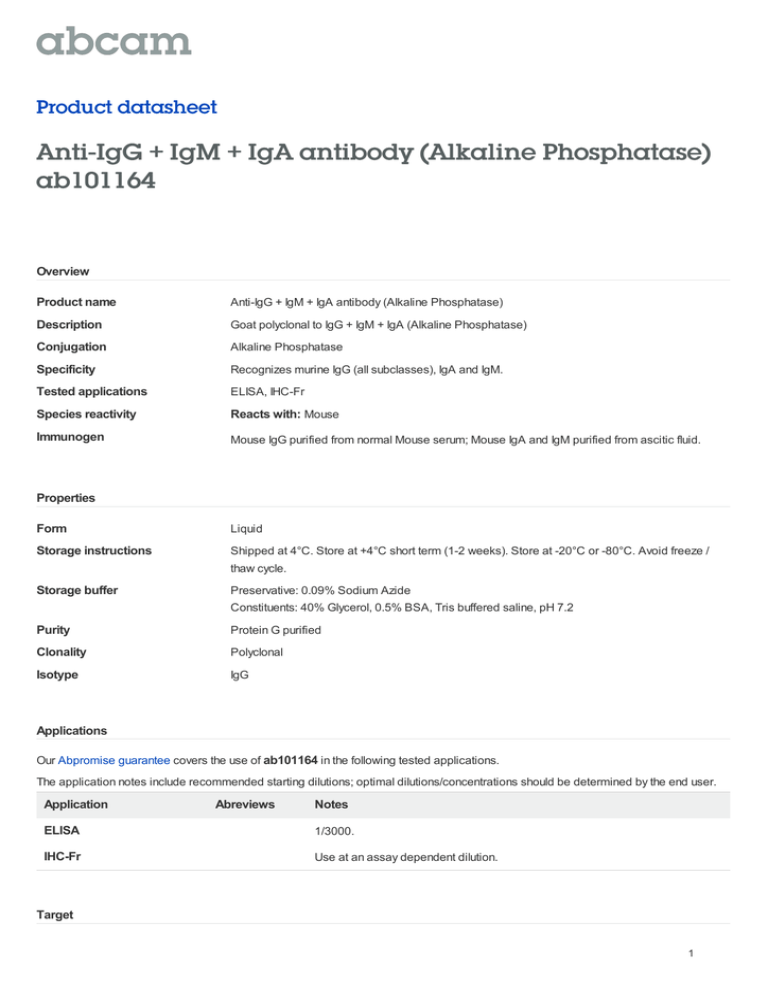
Product datasheet Anti-IgG + IgM + IgA antibody (Alkaline Phosphatase) ab101164 Overview Product name Anti-IgG + IgM + IgA antibody (Alkaline Phosphatase) Description Goat polyclonal to IgG + IgM + IgA (Alkaline Phosphatase) Conjugation Alkaline Phosphatase Specificity Recognizes murine IgG (all subclasses), IgA and IgM. Tested applications ELISA, IHC-Fr Species reactivity Reacts with: Mouse Immunogen Mouse IgG purified from normal Mouse serum; Mouse IgA and IgM purified from ascitic fluid. Properties Form Liquid Storage instructions Shipped at 4°C. Store at +4°C short term (1-2 weeks). Store at -20°C or -80°C. Avoid freeze / thaw cycle. Storage buffer Preservative: 0.09% Sodium Azide Constituents: 40% Glycerol, 0.5% BSA, Tris buffered saline, pH 7.2 Purity Protein G purified Clonality Polyclonal Isotype IgG Applications Our Abpromise guarantee covers the use of ab101164 in the following tested applications. The application notes include recommended starting dilutions; optimal dilutions/concentrations should be determined by the end user. Application Abreviews Notes ELISA 1/3000. IHC-Fr Use at an assay dependent dilution. Target 1 Relevance IgG is a monomeric immunoglobulin, built of two heavy chains and two light chains. Each molecule has two antigen binding sites. This is the most abundant immunoglobulin and is approximately equally distributed in blood and in tissue liquids, constituting 75% of serum immunoglobulins in humans. This is the only isotype that can pass through the human placenta, thereby providing protection to the fetus in its first weeks of life before its own immune system has developed. It can bind to many kinds of pathogens, for example viruses, bacteria, and fungi, and protects the body against them by complement activation (classic pathway), opsonization for phagocytosis and neutralisation of their toxins. There are 4 subclasses: IgG1 (66%), IgG2 (23%), IgG3 (7%) and IgG4 (4%). IgM normally constitutes about 10% of serum immunoglobulins. IgM antibody is prominent in early immune responses to most antigens and predominates in certain antibody responses such as 'natural' blood group antibodies. IgM (with IgD) is the major immunoglobulin expressed on the surface of B cells. Monomeric IgA constitutes 5-15 % of the serum immunoglobulins whereas dimeric IgA is localized to mucosa surfaces such as saliva, gastrointestinal secretion, bronchial fluids and milk. Mucosal IgA plays a major role in host defence by neutralising infectious agents at mucosal surfaces. The production is usually local and antigen specific IgA producing B-cells can be found in regions under the lamina propria where they mature into dimeric IgA producing plasma cells. IgA deficiency is the most common immunodeficiency that may affect both serum and mucosal produced IgA. Cellular localization Secreted Please note: All products are "FOR RESEARCH USE ONLY AND ARE NOT INTENDED FOR DIAGNOSTIC OR THERAPEUTIC USE" Our Abpromise to you: Quality guaranteed and expert technical support Replacement or refund for products not performing as stated on the datasheet Valid for 12 months from date of delivery Response to your inquiry within 24 hours We provide support in Chinese, English, French, German, Japanese and Spanish Extensive multi-media technical resources to help you We investigate all quality concerns to ensure our products perform to the highest standards If the product does not perform as described on this datasheet, we will offer a refund or replacement. For full details of the Abpromise, please visit http://www.abcam.com/abpromise or contact our technical team. Terms and conditions Guarantee only valid for products bought direct from Abcam or one of our authorized distributors 2
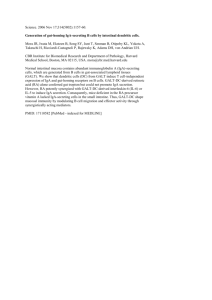
![Anti-CD147 antibody [CB43] ab23907 Product datasheet 1 References Overview](http://s2.studylib.net/store/data/011970305_1-0e97b90e3d2ef6c31f1c5e215ab5764d-300x300.png)
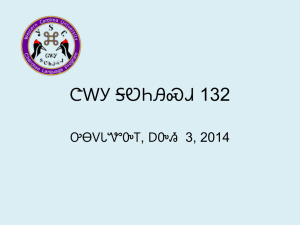
![Anti-Semaphorin 4D antibody [133-1C6] ab95612 Product datasheet 1 Image Overview](http://s2.studylib.net/store/data/012461842_1-4878517c0430128602596c304c8fbad4-300x300.png)


